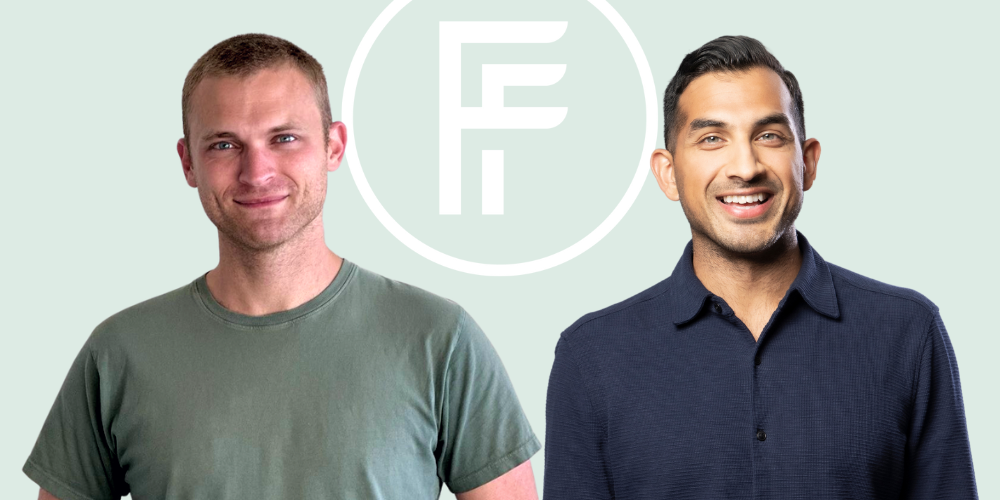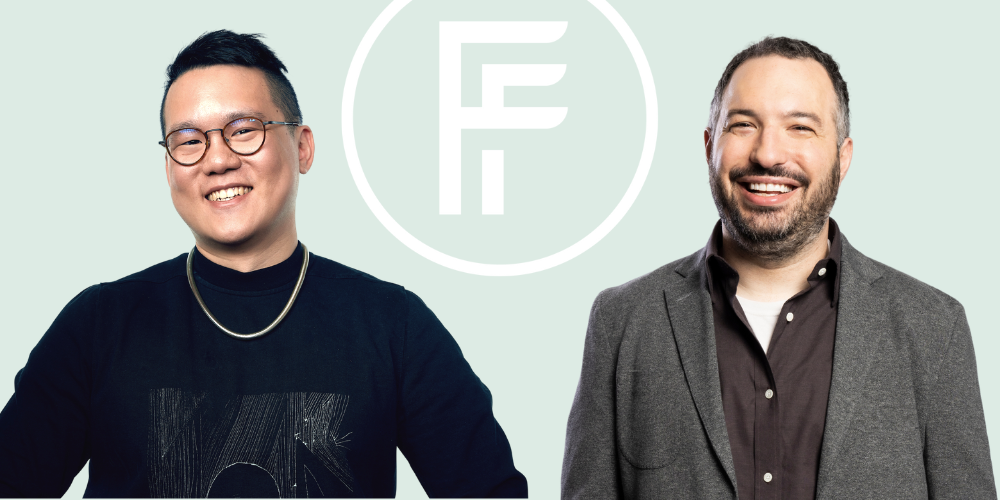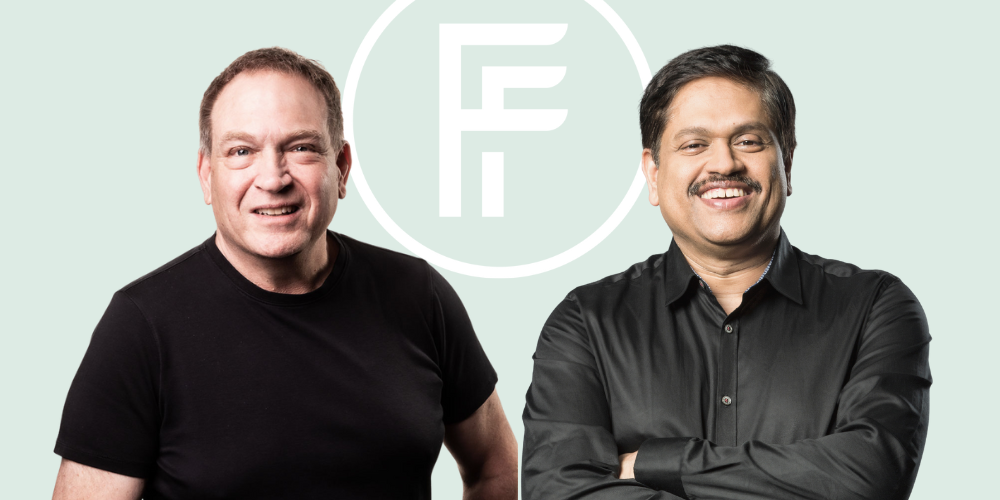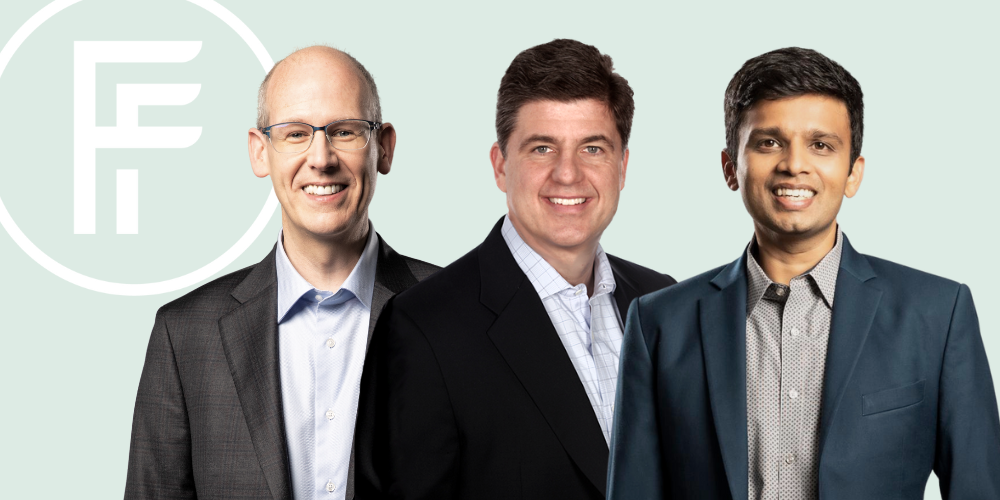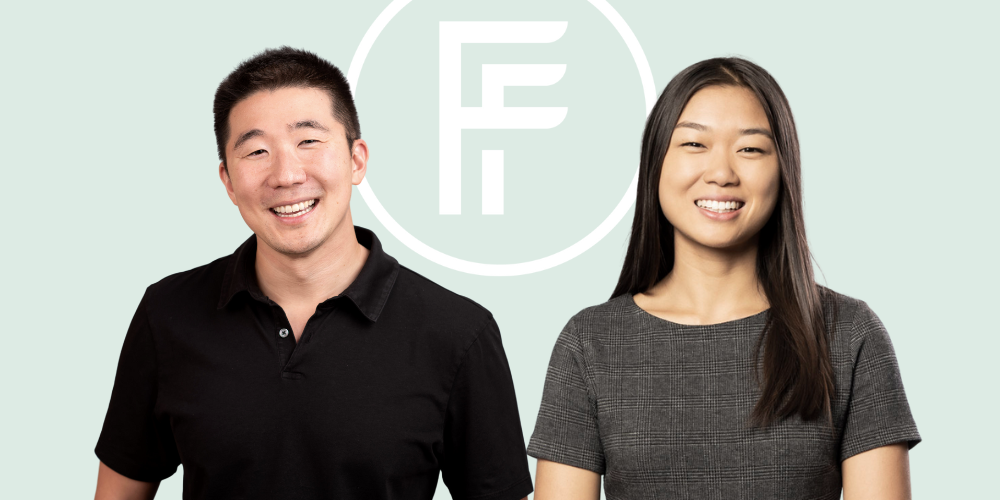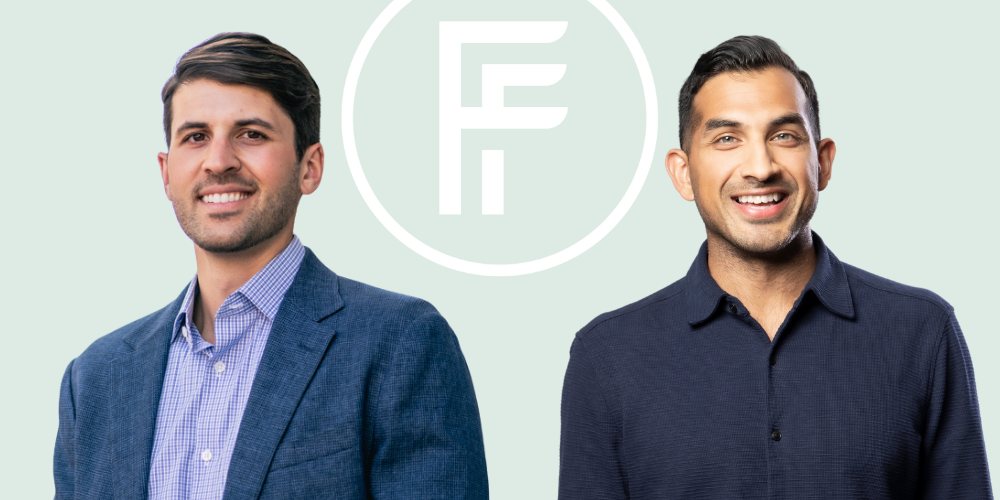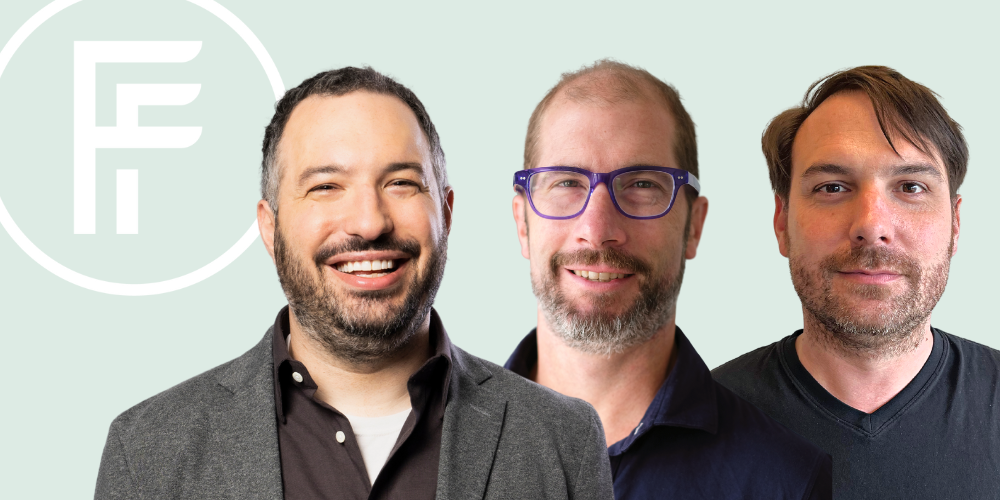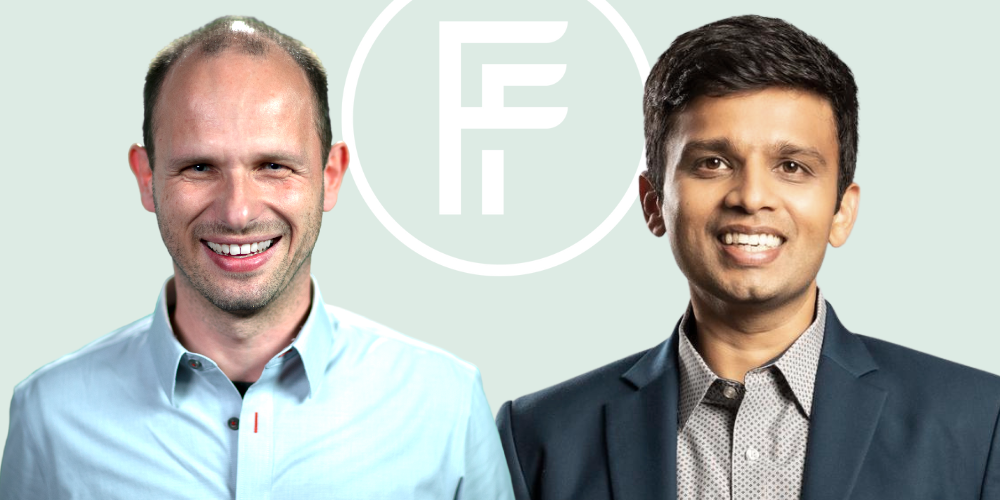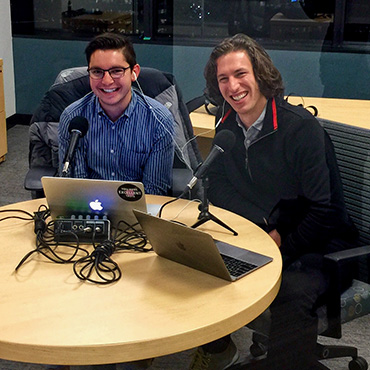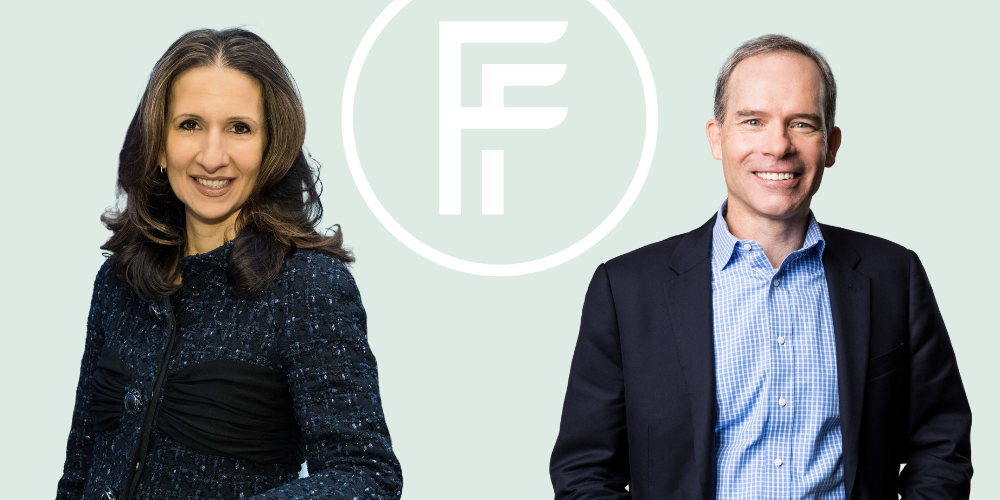
In this week’s episode of Founded & Funded, Madrona Managing Director Matt McIlwain hosts NYSE Group President Lynn Martin ahead of our Intelligent Applications Summit on October 10th and 11th. Lynn will be speaking at the Summit, but we thought it would be great to have her on the show to talk more about her background, the NYSE, capital markets, IPO trends, and, of course, the role data, AI, and large language models are playing in the markets and in companies broadly! This conversation couldn’t come at a better time now that we’re seeing a number of tech companies teeing up IPO plans.
Lynn thinks we’ll be back to a more “normal” IPO environment in 2024 – but you have to listen to get her full take!
The 2023 Intelligent Applications Summit is happening on October 10th and 11th. If you’re interested, request an invite here.
This transcript was automatically generated and edited for clarity.
Matt: I’m Matt McIlwain, and I’m a managing director here at the Madrona Venture Group. I’m delighted to have Lynn Martin, who’s the president of the NYSE Group, which includes the New York Stock Exchange, and she’s also Chair of ICE Fixed Income and Data Services. Lynn, you started your career coding, you were a computer programmer back at IBM out of college, and now you’re leading the world’s largest global stock exchange and a bunch of related businesses. Before we dive into things like the capital markets and the businesses that you run, and of course, the topic of AI that’s on everybody’s mind, I’d love to jump into how you get from programming at IBM to the financial markets?
Lynn: So first, Matt, thanks so much for having me. It’s always good to spend time with you — great question as to how I wound up here. As you pointed out, I was a programmer. I was trained as a programmer, I have an undergraduate degree in computer science, and it was around the time of the dot-com revolution, and markets, in particular, were starting to have technology integrated into them.
I was at IBM, and I was really looking for something that spoke to my passions. My passions at the time were financial markets, financial market infrastructure, and the math that underpinned financial markets. It’s what drove me to get my master’s degree in statistics. I happened upon an opportunity in 2001 with a derivatives exchange, which was based in London called London Financial Futures Exchange. They had a tremendous amount of people in their organization that could speak about the products that they had listed, so really European short-term interest rate debt and equity index futures, but they didn’t have anyone who could talk to the new breed of trader, which was people who were writing to the API as markets started to go electronic.
I interviewed with them, and what really interested them about me was the fact that I was a programmer. I had conversational knowledge of some of the models and some of the products, but I could talk to a programmer who was writing to this thing called an API at the time.
Matt: Yeah, before APIs were cool.
Lynn: Exactly.
Matt: Yes.
Lynn: At the time, the whole management team of that exchange was like, “What’s an API?” So the right place and the right time, and the interesting skillset that led me to financial markets back in 2001.
Matt: No, that’s fantastic. To fast-forward a little bit, you ended up at NYSE Group and have had successive opportunities and broadening roles. I don’t think most people really have an appreciation for the breadth of the NYSE Group and then the related relationship with ICE. Can you paint that broader picture, and then we can talk specifically about the areas that you have responsibility for?
Lynn: Yeah, I’ll fast-forward through a little bit of history. In 2012, I was with NYSE. I was CEO of a futures exchange that NYSE was a 51% owner of, and 49% was owned by a variety of institutions on the street, and a company called ICE came along and acquired the New York Stock Exchange. ICE was an electronic group of exchanges, a company that was very much driven by the implementation of cutting-edge technology and the application of that technology to financial markets. That acquisition was completed in 2013, and I found myself in a very interesting position in that I was in a directly overlapping business unit.
I wound up taking a position being offered and then taking a position to run one of their clearing houses. I got to know the founder of ICE, a gentleman by the name of Jeff Sprecher, who is still our chair and CEO of ICE, who really got to know my background both from an academic standpoint and a business standpoint. He’s the type of guy who’s always thinking about two years, three years, five years down the road, and he’s been a great mentor to me in that regard.
At the time, he was thinking about, “Okay, a really important output of financial markets and equally an important input to the most liquid financial markets is data.” And he was already thinking at that time, “There’s something around data that I want this ICE group to be a part of.” It led us to form ICE Data Services in 2015, which I was named president of, and it rapidly grew into ICE’s largest single business unit through a variety of acquisitions. The way you should think about that group is pretty much what I just said. It’s all down to the premise that the most liquid markets have a tremendous amount of data as outputs. In order to make a market — and a market can be broadly defined — liquid and actionable, you need data to form what value is going to be.
That can apply to everything from the U.S. equity markets, it can apply to fixed income markets, it can apply to a lot less traditional markets such as where ICE Group is now entering the next generation of its evolution, the mortgage market, the U.S. mortgage market, and how we use data to make a more informed decision or allow for a more informed decision in the U.S. mortgage market.
Matt: You chair this whole group, the ICE Fixed Income and Data Services. Can you give us one tangible example of the more popular data services you provide today and how that works? We’ll come back later to talk about how AI is changing or giving you opportunities to enhance some of these areas.
Lynn: AI plays an incredibly important role in the Fixed Income and Data Services vertical that we have at ICE. You can take AI and large language models from an efficiency standpoint. How do you do more with less bodies? How do you cover a broader universe, as I like to think of in the fixed-income markets? In the fixed income markets, that manifests itself in us providing valuations for 2.7 million securities globally and also providing terms and conditions data, the underlying aspects of a bond where when it matures, what its coupon rate is, all those sorts of good things on 35 million securities globally.
We do that through the implementation of natural language processing, large language models, and all different forms of artificial intelligence. Still, importantly, we have a strong human overlay that knows if what those models are producing is good information or bad information. You don’t want the erroneous information to continue to perpetuate through a system because then that winds up polluting a system.
Matt: You go from a virtuous to a vicious cycle, and these capital markets are dynamic. Before we dive more into some ways you use ML and AI, what is the state of the capital markets today? I’m thinking about the public and the fixed-income markets generally, and how do you think about that market space, the context beyond all the services that you provide?
IPO Trends
Lynn: They’re operating as you would expect them to operate. So 2020, and 2021, if you think about the equity markets, you had a tremendous amount of IPOs coming out because the system was flush with cash, and people were taking advantage of high valuations. And then what you saw in 2022, early 2022, you saw volatility start to creep in, volatility instigated by multiple factors, the war in Ukraine, rising interest rates, monetary policy, how do we pay back some of that money that’s been injected into the system? That caused the IPO markets, the people who were tapping the U.S. equity markets, to grind to a halt, as we saw in 2022.
As we moved into 2023, you’re now starting to see the effects of the Fed implementation of rising interest rates start to work its way through the system. So effectively, you’re starting to see inflation come down, and you’re starting to see the desired effects that the Fed had with its monetary policy start to take hold. The way we’ve started to see that manifest itself in our markets is number one: the volatility has come way down. The key barometer that I always look at is the VIX. The VIX has been 13, 15, somewhere around there, definitely below 20 for a sustained period of time.
That’s really important for a company that’s thinking, “Okay, is it time for me to tap the public markets from a capital perspective?” What you’ve now seen is, at least in Q2, we saw the IPO markets start to reopen. So you saw Kenvue, which was a spin-out of Johnson and Johnson, raise a $3.8 billion price at the high end of the range upsize. You saw CAVA, you saw Savers, you saw Fidelis, you saw Kodiak more towards the end of Q2. What encouraged me about everything we saw in Q2 is you saw both U.S. domestic deals get done, you saw international deals get done, and you saw multiple sectors come to market, and that’s the first time that you’ve really seen a good healthy cross-section of activity tap the public markets since 2021, certainly.
Matt: Well, I’m sensing some cautious optimism in the return of the IPO market. It’s been a year and a half since Samsara listed on the NYSE back in December of 2021 — since you’ve really had a technology IPO and the sense of how we think about it in the tech venture business, how are you seeing the end of this back half of this year in terms of technology IPOs and then also the trade-off between the specific situation that some of these IPOs might be at a lower price in the public markets than the last private round?
Lynn: I think the investors have gotten their heads around the fact that the valuations are going to be different from 2021. 2021 was a bit of an anomaly in terms of the valuations. Very optimistic that we’re going to start to see deals come out in the second half, particularly in technology. Ultimately someone’s got to test the waters, though, so there’ll be a couple of deals that will probably come out in the second half of 2023, which are going to do that. And we’re working with a variety of companies in our backlog who are now saying, “Yeah, we’re going to go in probably early Q4 timeframe and there may actually be one or two that go prior to that.”
Very optimistic that those deals are going to come out, those deals are going to get done, and then that’s going to really set the stage for 2024, which is when I think we’re going to be back to a more normal IPO environment.
Matt: That’s encouraging. With that in mind, we work with private companies at all different stages. Some of them are getting close to being IPO-ready. What kind of advice do you and your teams give to these kinds of private, rapidly growing companies about what it means to actually be IPO-ready?
Lynn: Yeah, and I use the term IPO-ready a lot. The bit that 2021 showed was that 2021 was giving value to growth at all costs. It was for every dollar of growth, the market was rewarding you. The companies that are coming out now have balanced growth as well as profitability and how to not sacrifice growth but also come out with some discipline on the expense side. Ultimately, an investor’s going to ask you about expenses during your earnings call, they’re going to ask you about growth during an earnings call. I think being already of that mindset that you’re balancing growth with profitability is a good philosophy to have going into your IPO because if you’re a company that’s a year old, five years old, 10 years old, 100 years old, you’re going to get asked those questions on your earnings call.
Matt: It’s a tricky balance, and things got a little out of kilter in the 2020 back half of 2021. I agree that we’re coming back to more of a balanced outlook there. Maybe just turn just a little bit, you’ve got this whole area of fixed income you’re responsible for. Just give us a view of the fixed-income markets. Treasury prices have been volatile. I think they’ve stayed more volatile in general here and are trending downward. The rates on the ten years have popped up a good bit again. What’s your outlook on the fixed income side, and how does that influence the timing and this return to the IPO market?
Lynn: It’s all ultimately tied together. When the equity markets are a bit more volatile, there could be a flight to quality, and it could be more of the treasuries that people invest in. We’ve seen a lot of volatility not just in treasuries, we’ve seen it also in the muni markets, the U.S. municipal markets. Also, investment grade and high-yield corporate debt have been bouncing around a bit as well. The treasury market, though, has been incredibly volatile. Typically when the treasury market is volatile, the muni markets are volatile too because those two trade at a spread to each other. I think to the extent that there is continuing to be treasury market volatility, you’ll see it manifest itself across those two asset classes in particular.
Matt: There’s just so much input data and output data in all these different capital markets and related data services areas. Tell us about the groups that you are responsible for and how you guide and direct them around what more can we do with this data? What can we do with AI in general, generative AI in particular?
Lynn: One of the things that I’ve always been focused on the data side is observable data. Good data is gold, and bad data, when it gets into a system, is really challenging to expunge, so I tend to focus on how we harness the good data and build the right models off of that good data to extrapolate other pieces of information. One of the areas that we’ve been super excited about is how we can take data and how we can take these large language models and add efficiency to the trader’s workflow.
One of the big mantras I have is to always stay close to your customers and talk to your customers about what their pain points are, so one of the pieces of functionality that we’re incredibly proud of that we built almost a decade ago in our data services business is our ICE Chat platform. That chat platform connects the entirety of the energy markets ecosystem, everything from a drilling company to a producer, to an investor, and even to people who carry the cargo from different ports for delivery. Within that chat platform, we had developed a proprietary large language model, which knows if I’m talking to you about what day of the week today is, or it knows if I’m talking to you about the price of crude oil.
If it senses that we’re talking about the price of crude oil, it’ll pop in some analytics alongside it, including a fair value for what it detects we’re talking about. Then if it further detects information, it underlines the price and quantity that we’re exchanging information about potentially transacting and allows a seamless submission to our exchanges and our clearing houses. It’s adding a tremendous amount of efficiency to a trader’s workflow, and we’ve actually seen an uptick in volume on our benchmark energy markets on the ICE side of the business during the first half of this year by 60% using this mechanism.
I think that’s because people are becoming more and more conversant in large language models, how to use them, how to have them add efficiencies to their workflows. We just see it manifests itself in our energy markets and then, more recently, in our utility markets.
Matt: Now, it’s very interesting. It’s sort of a capital markets chatbot copilot, as it were. We’re having a conversation, we’re trying to understand things, and you are providing relevant, real-time information that facilitates the exchange of ideas, which ultimately can facilitate the exchange of financial transactions.
Lynn: Yep, that’s absolutely right. And it all comes back to our north star, which is data adds transparency to markets, and information adds transparency. You think about what all of these large language models are doing, they’re adding transparency, they’re giving you pieces of information. That’s why the underlying data that underpins them is so critically important to have correct.
Matt: Yes, I agree. It seems like much the whole world agrees now, whereas even nine months ago, I think the dots had not been connected for people, but of course, we had ChatGPT, and that was kind of a moment we’ll all look back on. We recently did some analysis here at Madrona, working with some AlphaSense data about just how many people are talking about generative AI and specifically looked at Q2 earnings, we’re not quite through the Q2 earnings season, but we’re getting close, and what was amazing was that we looked at both software as a service companies and then other or non-SaaS, and there was about a hundred of these software-as-a-service companies. They mentioned generative AI or AI on average seven times per company, with over 700 mentions on their earnings calls just this quarter.
And what was maybe an even more amazing statistic was that the non-GenAI companies, in this case, over 300 of them had mentioned on average five times in their earnings call generative AI or AI-related topics. And this is companies, Warby Parker, Lululemon, Warner Bros. I mean, you can go down the list. A whole bunch of amazing companies that you all, of course, have helped and trade on the New York Stock Exchange. What are you hearing from CEOs and CFOs from tech and non-tech companies in this GenAI area?
Lynn: Well, I agree with you. AI seems to be the letters of the year. I mean, I grew up in a generation where we had letter of the day, these are the letters of the year. From every company I talk to, they talk about the importance of data. And unsurprisingly, it’s a topic that I love to talk about. Now, there is so much data floating around in this world. It is really hard as a human to process all of the information that you have at your fingertips. I mean, petabytes of data at your fingertips on any one given day. You need things like AI, you need things like large language models to help parse through the data in an efficient fashion that’s going to give you additional insights, it’s going to give you good insights on some of the names you just mentioned on what your customers are doing, what your customers are saying about your products, and what your customers are doing in terms of purchase behavior.
That’s going to help drive your own investments, it’s going to help you drive where your next investment dollar is going to be. In the case of Warby Parker, it’s going to be on a pair of sunglasses. They recently rolled out sunglasses that flip from two different colors. What are people saying about that? Has that been a hit? If it’s been a hit, should we make more of those types of products? So it really helps the investment flywheel in a company accelerate because you’re getting that piece of information a lot quicker than you normally would.
Matt: I think that’s well said, and it makes me think back to the FinTech market specifically and 10, 12 years ago, just the rise of cloud computing and computing at massive scale. I think, as you’ve mentioned, part of what ICE took advantage of, I think architecturally as a business, how are you seeing within FinTech the potential for leveraging GenAI and LLMs? And of course, I know you’re already doing things, but how are you all strategically thinking about where this might go and evolve your business over time?
Lynn: We’re looking at ways within our own business across ICE to make processes much more efficient that are ripe for efficiency plays. One business, I mentioned it earlier, that ICE is keenly focused on is our growing mortgage technology business and how to make the process of homeownership in the U.S. much more streamlined and, therefore, more efficient for the consumer. And how do we put good data in the consumer’s hands so they’re making a more informed purchase or getting a more informed rate on an interest rate?
If you look at the tremendous amount of data that’s available within that vertical in particular, we think there’s a tremendous amount of insights that can be unleashed to make the process more efficient in terms of buying a home, securing a mortgage, refinancing a mortgage, even the securitization process. It’s an area that we’re keenly focused on at the moment.
Matt: Given the leading-edge work that you all at the NYSE Group are doing, as well as the fact that you’re really looked to from all these public companies or companies that are considering going public, are they also asking you for your perspective and advice in these areas? And how so?
Lynn: Yeah, and we like to be a good partner to our firms. I always describe companies the first time we meet, either early on the startup side or we’re pitching them to go public on us. We’re in it to be your business partner. And as part of being your business partner, we’re here to share our experiences. We’re here to share our learnings, we’re here to share our tools. I think it’s important to zoom out on issues because there might be a micro-type issue that someone is struggling with around data privacy, for example.
But if you zoom out just a little bit, and while you may think a consumer business doesn’t have anything to learn from a financial services business, they wind up having a lot to learn from each other because of customer information, for example, and the way people handle customer privacy information. There are a lot of learnings to be shared across our companies, and we’re sort of the clearing house, if you will, for that type of information. I sometimes feel like my job is to help issue spot and to spot macro trends for our companies and make connections within our community to allow companies to have those conversations on topics that they may think they have nothing in common on, but they actually do.
Matt: It brings to mind your own experience now having been president of the NYSE group, it’ll be approaching two years, what has been a bigger learning or two for you in terms of this leadership role and something that you’d want to share with others that are in similar leadership roles? I’m curious what you’ve been learning over the last couple of years.
Lynn: The thing that excites me the most about this job is just the platform that NYSE has and the role that we play in financial markets. Certainly, thought leadership and financial markets globally, but the role we can play is to be a convener of people to have really important in-depth conversations on a variety of topics. The topic of this year is clearly the two letters we’ve been talking about, AI, and that’s an area, but AI is one thing, and if you double-click on AI, you wind up with a variety of sub-issues, data privacy being one, what the application of AI to different industries is too? It’s such a meaty topic that I think, given the role that we have in financial markets, we have a very good opportunity to bring people together to discuss these topics.
Matt: It’s a topic that we’re going to be unpacking more, and we’re just delighted that you’re going to be coming out to join us for the Intelligent Applications Summit on October 11th in Seattle. It’s going to be a very special event again this year, and we’re looking forward to you sharing your perspective and learnings on what you’re doing in the AI area, as well as what’s happening in the capital markets.
Thinking back again to where we started in this conversation, the wonderful rise from being a computer science major and a programmer and working at IBM to being president of the NYSE Group and all these other responsibilities with ICE, tell us what advice you would give to college students today and college students that are trying to start off on the right foot with their career journey.
Lynn: I was fortunate in that I had the opportunity to start in a company, IBM, which gave me the ability to interact with multiple different companies. I started in a consulting role at IBM, and that gave me the opportunity to see a variety of different industries. The one thing that I think was incredibly important in my first few years was that I fell in love with a specific area, so the advice I always give to college students is you’ve got to love the field you’re in. You have to wake up every day wanting to learn more about it. I wake up every day and I come to 11 Wall Street, and I learn something new because that’s just what you should be doing. The world is constantly changing, constantly evolving, and if you have the opportunity to join an organization where you could love the subject matter and continuously learn, you’re in the right place.
Matt: It’s such good advice. Having that feeling that you wake up every day wanting to learn more, being at a place where you love the subject matter, you enjoy the people, you respect the people, completely inspiring to me as well, and I’ve been out of college for a few years.
Lynn: So have I.
Matt: I can’t wait to spend more time together here and it’s incredibly impressive what you’ve done in your rise through NYSE and then this broader role and what you and your teams are doing on their front foot to innovate in areas like AI and generative AI in particular. So Lynn, thank you very much for joining us on the podcast, and look forward to seeing you soon.
Lynn: Thanks for having me.
Coral: Thank you for listening to this week’s episode of Founded & Funded. We’d love you to rate and review us wherever you get your podcasts. If you’re interested in learning more about the New York Stock Exchange and what they can do for companies, visit their site at www.nyse.com. And if you’re interested in attending our IA Summit and hearing more about IPO trends from Lynn Martin, visit ia40.com/summit. Thank you again for listening, and tune in a couple of weeks for our next episode of Founded & Funded with Statsig Founder and CEO Vijaye Raji.
